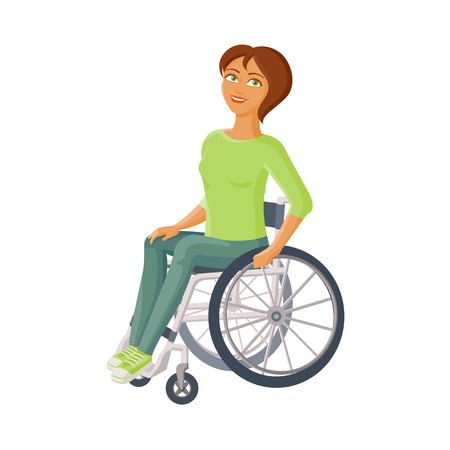Understanding Disability Insurance in the U.S.
Disability insurance is a crucial safety net for Americans, especially women who often face unique financial challenges. In the United States, disability insurance comes in several forms: private policies you can buy on your own, employer-sponsored plans offered as part of workplace benefits, and government programs like Social Security Disability Insurance (SSDI). Each option has its own eligibility rules, coverage limits, and application processes. At its core, disability insurance is designed to replace a portion of your income if you become unable to work due to illness or injury. Without this protection, an unexpected health event can quickly drain savings and derail long-term financial plans. For women—who are more likely to take time off for caregiving or experience gaps in employment—understanding how these policies work is essential for building a resilient financial future and addressing coverage gaps that may otherwise leave them vulnerable.
Unique Disability Risks Faced by Women
When it comes to disability insurance, women in the United States face several distinct risks that often go unnoticed or unaddressed. Understanding these unique vulnerabilities is essential for creating more effective coverage solutions. Let’s break down the main factors—health conditions, caregiving responsibilities, and employment patterns—that contribute to women’s increased risk of financial hardship due to disability.
Health Conditions and Higher Disability Rates
Women are statistically more likely than men to experience certain chronic health issues, such as autoimmune disorders, arthritis, and reproductive health-related conditions. These medical challenges can increase the likelihood of needing disability insurance. Additionally, women tend to live longer than men, which means they are at greater risk of developing age-related disabilities over their lifetime.
| Factor | Impact on Women |
|---|---|
| Chronic Illness | Higher prevalence among women, especially autoimmune diseases |
| Longevity | Increased risk of disability as women age |
Caregiving Roles and Their Financial Impact
Women are much more likely to take on caregiving roles for children, aging parents, or family members with disabilities. This responsibility often leads to career interruptions or part-time work arrangements, making it harder for women to qualify for employer-sponsored disability insurance or accumulate sufficient personal savings. The financial strain from unpaid caregiving can also make it tougher for women to recover from their own disabilities.
| Caregiving Scenario | Potential Financial Consequence |
|---|---|
| Caring for children or elderly relatives | Reduced income and fewer benefits from work |
| Career breaks for family needs | Lower retirement savings and Social Security benefits |
Employment Patterns: Gaps and Part-Time Work
The American workforce shows clear gender differences in employment patterns. Women are overrepresented in part-time positions and industries that may not offer robust benefits packages—including short- or long-term disability coverage. Even when full-time, many women earn less than their male counterparts, making private disability insurance policies less affordable or accessible.
| Employment Pattern | Effect on Disability Coverage |
|---|---|
| Part-time/Temporary Jobs | Often no access to employer-sponsored disability insurance |
| Wage Gap | Less disposable income to purchase private coverage |
Tying It All Together: Why These Factors Matter
The combination of higher health risks, significant caregiving duties, and uneven employment opportunities puts women at a distinct disadvantage when it comes to both qualifying for and affording adequate disability insurance. Addressing these systemic gaps is crucial not only for individual financial security but also for broader gender equality in the U.S.

3. Current Coverage Gaps: Where Women Fall Through the Cracks
While disability insurance is intended to provide a safety net for those who cannot work due to illness or injury, significant gaps in coverage often leave women particularly vulnerable. One of the main issues lies in workplace benefits. Many jobs that predominantly employ women—such as part-time positions, contract work, or roles in caregiving and service industries—either do not offer disability insurance at all or provide only limited options. Even when group disability plans are available, eligibility criteria can be strict. Requirements like minimum hours worked per week, length of employment, or full-time status can exclude many women who juggle multiple part-time jobs or take breaks from the workforce for caregiving responsibilities.
Societal roles also play a critical part in shaping these gaps. Women are more likely to step away from their careers to care for children or aging parents, which disrupts both their income and access to employer-sponsored benefits. This interruption not only affects their immediate eligibility but can also impact long-term financial security if a disabling event occurs while they are out of the traditional workforce. Additionally, public disability programs such as Social Security Disability Insurance (SSDI) require consistent work histories and earnings records—criteria that may disadvantage women with interrupted or patchwork employment histories.
The combined effect of these factors means that women often fall through the cracks when it comes to adequate disability coverage. Without robust workplace benefits, clear eligibility pathways, and support that accounts for real-world societal roles, many women face significant financial risks if they become disabled. Addressing these unique challenges requires targeted reforms and greater awareness of how current systems inadvertently leave too many women unprotected.
4. Barriers to Accessing Disability Insurance
Despite the clear need for disability insurance, many women in the United States face significant challenges when trying to obtain adequate coverage. These barriers often leave women more vulnerable to financial hardship if they are unable to work due to illness or injury. Understanding these obstacles is crucial for identifying solutions and promoting greater access.
Cost: A Major Deterrent
One of the most common barriers is cost. Disability insurance premiums can be expensive, especially for those who are self-employed, work part-time, or do not have access to group plans through their employer. Since women are statistically more likely to earn less than men and may take career breaks for caregiving, paying for private coverage can feel out of reach.
| Barrier | Description | Impact on Women |
|---|---|---|
| Cost | High premiums and limited employer-sponsored options | Discourages enrollment, especially among lower-income women |
| Lack of Awareness | Limited knowledge about what disability insurance covers and how it works | Women may underestimate their need for coverage or assume other benefits will suffice |
| Systemic Biases | Eligibility criteria and underwriting practices that disadvantage women (e.g., pregnancy exclusions) | Certain health conditions or life events unique to women may lead to higher premiums or denial of coverage |
Lack of Awareness and Information Gaps
A significant number of American women are not fully aware of the benefits that disability insurance provides or may misunderstand its importance. This information gap can stem from insufficient education about financial products, lack of targeted outreach by insurers, or the mistaken belief that Social Security Disability Insurance (SSDI) alone will meet their needs.
Systemic Biases in Coverage and Underwriting
The insurance industry has historically used risk assessment models that do not always account for women’s unique health risks or employment patterns. For example, some policies exclude disabilities related to pregnancy or mental health—conditions that disproportionately affect women. Furthermore, traditional underwriting may penalize applicants with a history of certain medical conditions, making it harder for women to qualify for affordable, comprehensive plans.
Toward Greater Equity in Disability Insurance Access
Tackling these barriers requires a multi-faceted approach: making coverage more affordable, improving financial literacy and awareness among women, and advocating for policy reforms that remove gender-based biases from underwriting processes. By addressing these challenges head-on, we can ensure more American women have the protection they need when facing unexpected health setbacks.
5. Strategies for Bridging the Coverage Gap
Practical Steps for Women to Assess Disability Insurance Needs
Understanding your unique financial situation is the first step toward securing adequate disability insurance. Begin by evaluating your monthly expenses, existing savings, and any employer-sponsored benefits you may have. Consider potential scenarios, such as pregnancy complications or chronic health issues, that could interrupt your income. Online calculators and consultations with financial advisors who specialize in women’s needs can provide a clearer picture of necessary coverage levels.
Advocating for Better Benefits at Work
Many women receive disability insurance through their employers, but these plans often leave gaps. Don’t hesitate to ask your HR department about the specifics of your coverage—what’s included, what’s not, and how much income would actually be replaced if you needed to take leave. If the benefits fall short, organize with coworkers to request improvements or look into supplemental policies. Remember, advocating for better benefits is not just personal; it helps raise the standard for everyone in your workplace.
Policy Ideas to Address Systemic Gaps
On a broader scale, supporting legislation aimed at expanding paid family and medical leave can make a significant difference for women nationwide. Engage with local representatives and community organizations that push for more inclusive and equitable disability insurance standards. Sharing personal stories and voting for candidates prioritizing women’s health and economic security are powerful ways to drive change.
Resources to Find the Right Coverage
Finding the right policy requires research and comparison shopping. Look for insurers known for transparency and customer service, especially those offering policies tailored to women’s health needs. Nonprofits like the National Partnership for Women & Families or the Women’s Institute for a Secure Retirement offer guides and advocacy tools. Online forums and support groups can also provide firsthand accounts and recommendations from other women navigating similar decisions.
Quick Tips:
- Review all employer-offered benefit details annually
- Don’t assume Social Security Disability Insurance will fully protect you—it often has strict requirements and limited payouts
- If self-employed, seek out individual policies that allow customization based on your occupation and risk factors
By combining practical planning with collective action and resourceful research, women can better protect themselves against unexpected setbacks—and help reshape the system for future generations.
6. Empowering Women to Protect Their Financial Future
Taking control of your financial future means understanding the risks you face and proactively seeking solutions that fit your unique needs. Disability insurance is a powerful tool for women, especially given the specific challenges related to health, career interruptions, and caregiving responsibilities. Here’s how you can take actionable steps to secure the coverage you deserve.
Ask the Right Questions
Start by asking yourself and your insurance agent key questions: What types of disability insurance are available? How much coverage do I need based on my income and expenses? Does my policy account for pregnancy, chronic conditions, or part-time work? Are there any exclusions or waiting periods I should be aware of? Understanding these details will help you avoid unpleasant surprises if you ever need to file a claim.
Evaluate Your Current Coverage
If you already have disability insurance through your employer, review the policy carefully. Many group plans offer only limited benefits or may not cover all situations relevant to women’s lives. Consider whether an individual policy might better address your needs, especially if you’re self-employed, working part-time, or planning major life changes like starting a family.
Tap Into Supportive Resources
You don’t have to navigate this process alone. Reach out to professional organizations such as the National Association of Insurance Commissioners (NAIC), Women’s Institute for a Secure Retirement (WISER), or local financial advisors who specialize in women’s needs. These resources can provide guidance, answer questions, and help you compare policies tailored to your circumstances.
Build Confidence Through Education
The more you know about disability insurance, the more confident you’ll feel making decisions that protect your income and lifestyle. Read articles, attend webinars, or join community groups focused on women’s financial wellness. Don’t hesitate to ask tough questions—being informed is your best defense against unexpected setbacks.
Your Next Steps
Empower yourself by taking inventory of your current situation, consulting trusted professionals, and making informed choices about your disability insurance coverage. With preparation and the right support, you can safeguard your financial independence—no matter what life throws your way.

